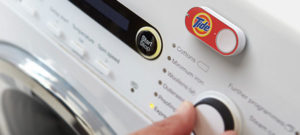
An internal McDonald’s memo labeled “proprietary and confidential” has been circulating, advising employees to get ready for a Wednesday launch of Android Pay — the successor to Google Wallet, and Google’s answer to Apple Pay.
Google officially announced Android Pay this spring, during it’s annual developers conference, saying only that Android Pay would launch with “Android M.”
Android 6.0 Marshmallow is slated for a Q3 2015 release, but because Android Pay won’t be exclusive to Marshmallow, it’s indeed possible that it may launch somewhere this week.
MCD is expecting the payments platform to roll out at just about all of its roughly 14,000 locations in the U.S. The company has been preparing to share Android Pay help resources with its employees, and likely already shipped out POP kits containing window decals promoting the platform, judging from the memo.
However, it’s possible this is a big misunderstanding and that Android Pay may not launch until this fall. The MCD memo already has been wrong once. It said Samsung Pay would launch last Friday. Instead, Samsung chose that dayto kick off its Ultimate Test Drive, a promotion that lets iPhone users try out a Galaxy handset for a month for just a buck.
Come On Over
Whether the Android Pay launch date is Wednesday or still down the road a way, there’s no denying the potential for Google’s mobile payments platform when Android sits atop the market with a share roughly five times fatter than Apple’s iOS.
Still, Google will face the same challenges standing in front of all of the other major providers of mobile wallets,noted Nick Nayfack, director of product for mobile atVantiv.
Customers will have to get used to the idea of leaving their cards in their purses and wallets, and Google will need to outline a clear incentive to encourage consumers to develop the Android Pay habit, he said.
“Ultimately, consumers need an experience that is five to 10 times better than a credit or debit card to transition to mobile payments,” Nayfack told the E-Commerce Times. “Apple and Google are well positioned to offer such experiences, as they own the operating system on the majority of popular mobile devices.”
There’s a need to speed up the checkout process, said Laura Heller, executive editor of FierceMarkets’ portfolio of retail publications.
Both millennials and merchants seem eager to adopt such platforms, she noted.
“Any solution that helps bring down the costs associated with traditional payments, i.e., swipe fees, is welcome,” Heller told the E-Commerce Times. “That’s why a group of them backed by Walmart have developed CurrentC, which is now in beta.”
Along with cutting down costs on the back end, Google earlier this year announced Hands Free, software that enables Android payers to pay for products at points of sale simply by saying “I want to pay with Google.”
It’s not yet available to the general public, but it’s coming soon to the San Francisco Bay Area, according to Google.
Apple has its fingerprint authentication, Samsung Pay has its ability to mimic magnetic strips, and Google wants to distinguish Android Pay by enabling touchless checkout.
Still, “like any other new consumer technology, [Android Pay] won’t take off until it’s universally available, simple to use, and works in tandem with the payment solutions shoppers are used to,” Heller said.
Samsung’s and Android’s new solutions will go a long way toward getting us there, she suggested.
No Really, Come On Over
Along with merchant and consumer acceptance, Google will have to work out platform integration and interoperability, observed Kevin Grieve, a partner in Strategy&’s financial services practice.
Android Pay will offer much more backward-compatibility than Samsung and Apple, which could make fraud a tad more of a concern.
Also, integration with merchants’ systems and with marketing platforms results in the creation of a vast number of back doors in Android Pay — and threats could be lurking near them.
“Despite the industry momentum behind mobile pay and its ability to shed the magnetic stripe data coveted by cybercriminals, most retailers are not necessarily ready to deploy the payment terminals and other infrastructure needed to support the service,” Grieve told the E-Commerce Times.
Consumers would be completely blameless if they opted to hold off on mobile payment platforms, because the threat of fraud is serious enough to do so, cautioned Bill Zielke, chief marketing officer at Forter.
However, consumers want more mobility, he pointed out, so e-tailers must ensure that their fraud prevention tools are optimized for mobile and build with consumers in mind.
That means “ensuring fraud decisions are instant, invisible and very accurate, regardless of the preferred shopping channel,” Zielke said. “For e-commerce, every dollar lost to fraud costs a retailer (US)$3.08. Phone orders almost double as much fraud as e-commerce.”
For all of the money lost through fraudulent activity, the mobile commerce sector is just too lucrative to ignore.
“Mobile commerce will soon represent a third of U.S. e-commerce,” Zielke said. “The easier and more ubiquitous it becomes, the more consumers will rely on it — and with the huge numbers of people who live with an Android phone in their pocket, it’s safe to assume Android will help towards ubiquity.”






















































Social Media
See all Social Media